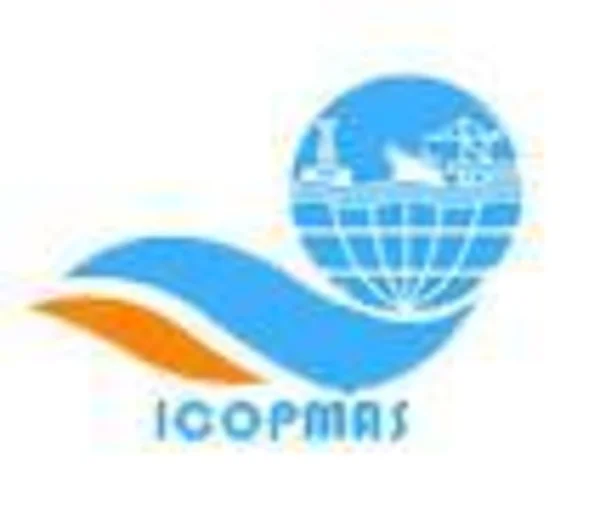-
investigation on resistance of a bulk carrier vessel using cfd method by vof model
جزئیات بیشتر مقاله- تاریخ ارائه: 1392/07/24
- تاریخ انتشار در تی پی بین: 1392/07/24
- تعداد بازدید: 917
- تعداد پرسش و پاسخ ها: 0
- شماره تماس دبیرخانه رویداد: -
bulk carriers have an important portion of world maritime transport. the world's bulk transport has reached immense proportions: in 2005, 1.7 billion metric tons of coal, iron ore, grain, bauxite, and phosphate were transported by bulk carrier ships. today, the world's bulker fleet includes 6,225 ships of over 10,000 tons deadweight and represents 40% of all ships in terms of tonnage and 39.4% in terms of vessels. in recent years, the numerical solution method and specially computational fluid dynamics (cfd) have developed for studying hydrodynamics of ships. the cfd method in comparison with model test has great advantages such as lower costs, accessibility and more visible details in results e.g., pressure and velocity contours, vectors and gradients. one of the most important weaknesses of this method is less accuracy than that of model test. therefore, experimental results should be used for verification of cfd results. in this study, we use cfd method for calculating resistance of a bulk carrier model and then verify results by experimental data from model test. numerical study on resistance of a ship has been performed in several cases. thornhill et al. used a finite volume code to simulate the flow around a planning vessel at steady speed through calm water using 3d unstructured hybrid mesh. force and moment data from the simulations were used in an iterative scheme to determine the dynamic equilibrium position of the model at selected speeds. van et al measured flow around a vlcc tanker model. ogiwara et al. carried out a study on series 60 and calculated pressure distribution around hull of that. jones et al. used fluent code for numerical simulation of flow around a modern naval ship, dtmb 5415 and calculated waves and free surface of it. obreja et al carried out a series of model tests in a bulk carrier vessel. in this study, we use results of these tests for verification of numerical results. accordingly, we used the geometry of experimental model for numerical modeling. banks et al calculated components of container ship resistance numerically. they used ansys cfx for numerical simulation and compared cfd results with experimental results. hakan et al modeled a ship hull by using fluent commercial code and calculated resistance of model. finally they compared numerical results with experimental data.
مقالات جدیدترین رویدادها
-
استفاده از تحلیل اهمیت-عملکرد در ارائه الگوی مدیریت خلاقیت سازمانی و ارائه راهکار جهت بهبود
-
بررسی تاثیر ارزش وجوه نقد مازاد بر ساختار سرمایه شرکت های پذیرفته شده در بورس اوراق بهادار تهران
-
بررسی تأثیر سطح افشای ریسک بر قرارداد بدهی شرکت های پذیرفته شده در بورس اوراق بهادار تهران
-
بررسی تأثیر رتبه بندی اعتباری مبتنی بر مدل امتیاز بازار نوظهور بر نقد شوندگی سهام با تأکید بر خصوصی سازی شرکت ها
-
تأثیر آمیخته بازاریابی پوشاک ایرانی بر تصویر ذهنی مشتری پوشاک ایرانی (هاکوپیان)
-
رهبری تحول آفرین عامل پیش برنده مدیران سازمان های آموزشی
-
تحلیل دینامیکی سد بتنی دو قوسی بختیاری با نرم افزار اباکوس
-
پرستاری بازتوانی بیمار محور برای افراد سالمند با مشکل دمانس
-
بررسی و مطالعه آزمایشگاهی میزان آب مورد نیاز مخلوط های بتن غلتکی روسازی (rccp)
-
industrial techniques which used to eliminate erosion corrosion in heat exchanger tubes
مقالات جدیدترین ژورنال ها
-
مدیریت و بررسی افسردگی دانش آموزان دختر مقطع متوسطه دوم در دروان کرونا در شهرستان دزفول
-
مدیریت و بررسی خرد سیاسی در اندیشه ی فردوسی در ادب ایران
-
واکاوی و مدیریت توصیفی قلمدان(جاکلیدی)ضریح در موزه آستان قدس رضوی
-
بررسی تاثیر خلاقیت، دانش و انگیزه کارکنان بر پیشنهادات نوآورانه کارکنان ( مورد مطالعه: هتل های 3 و 4 ستاره استان کرمان)
-
بررسی تاثیر کیفیت سیستم های اطلاعاتی بر تصمیم گیری موفق در شرکتهای تولیدی استان اصفهان (مورد مطالعه: مدیران شرکتهای تولیدی استان اصفهان)
-
طراحی، ساخت و کنترل ربات پرنده چهار ملخه کوچک برای طی مسیر خاص با استفاده از روش پرواز کور
-
مقایسه فرهنگ سازمانی و تعهد سازمانی در مدیران و معلمان دوره ابتدایی شهر قم
-
بررسی تاثیر انسان انگاری برند بر دفاع از برند با نقش میانجی عشق برند با نقش تعدیلگری نگرش نسبت به فاصله گذاری اجتماعی (مورد مطالعه: مشتریان محصولات سن ایچ)
-
بررسی تاثیر سطح سواد والدین بر یادگیری دانش اموزان ابتدایی شهر ایلام
-
کنترل پیش بینی مدل جهت مدیریت کارآمد منابع انرژی در ساختمان هوشمند




سوال خود را در مورد این مقاله مطرح نمایید :